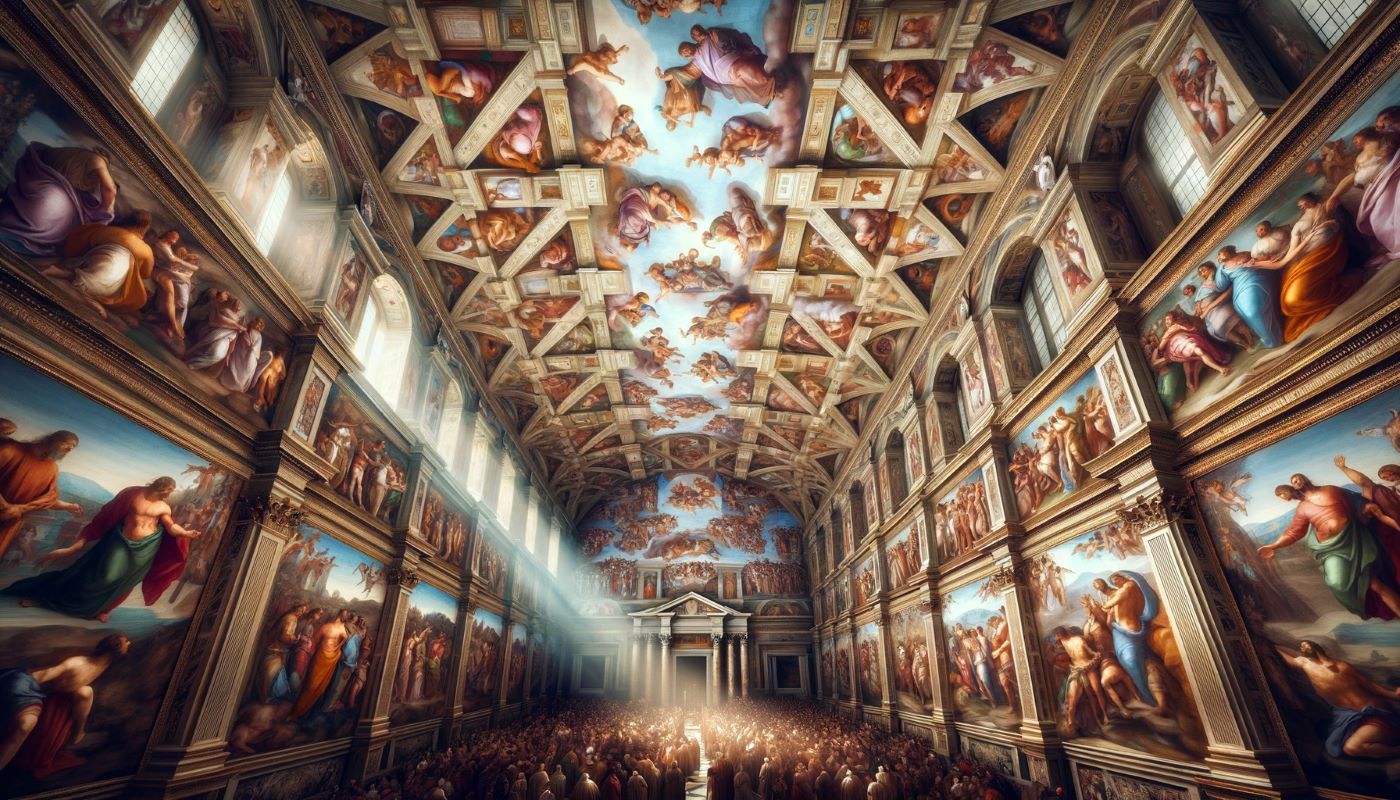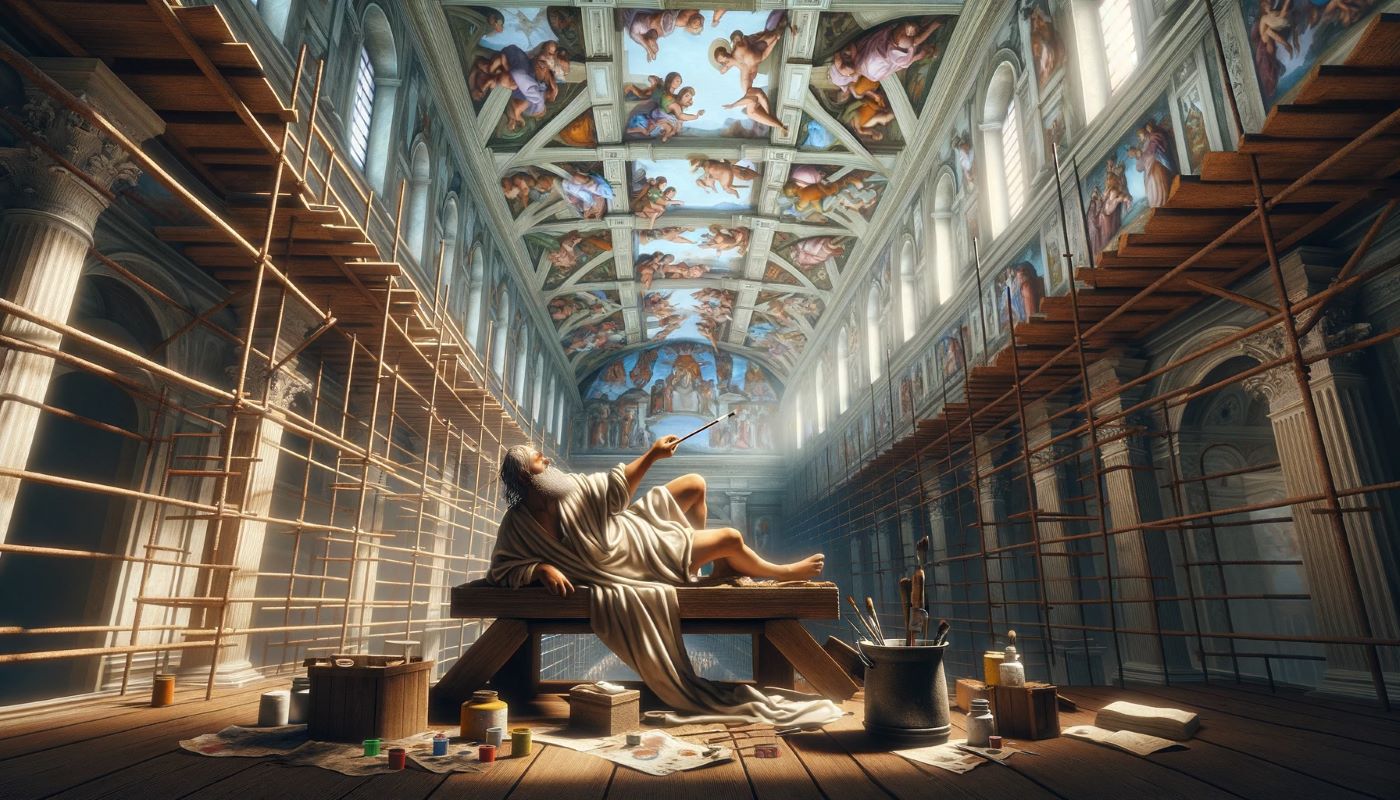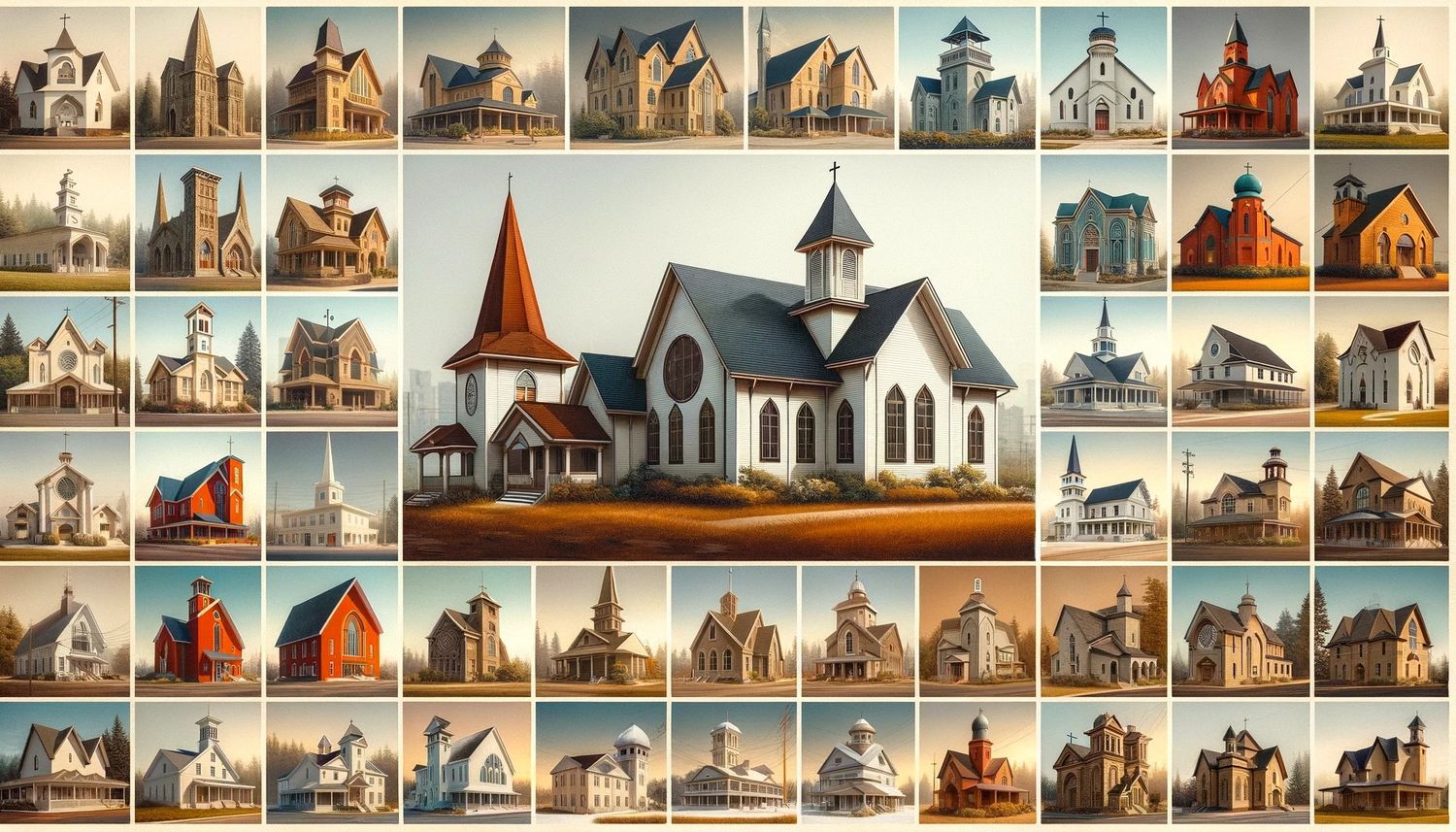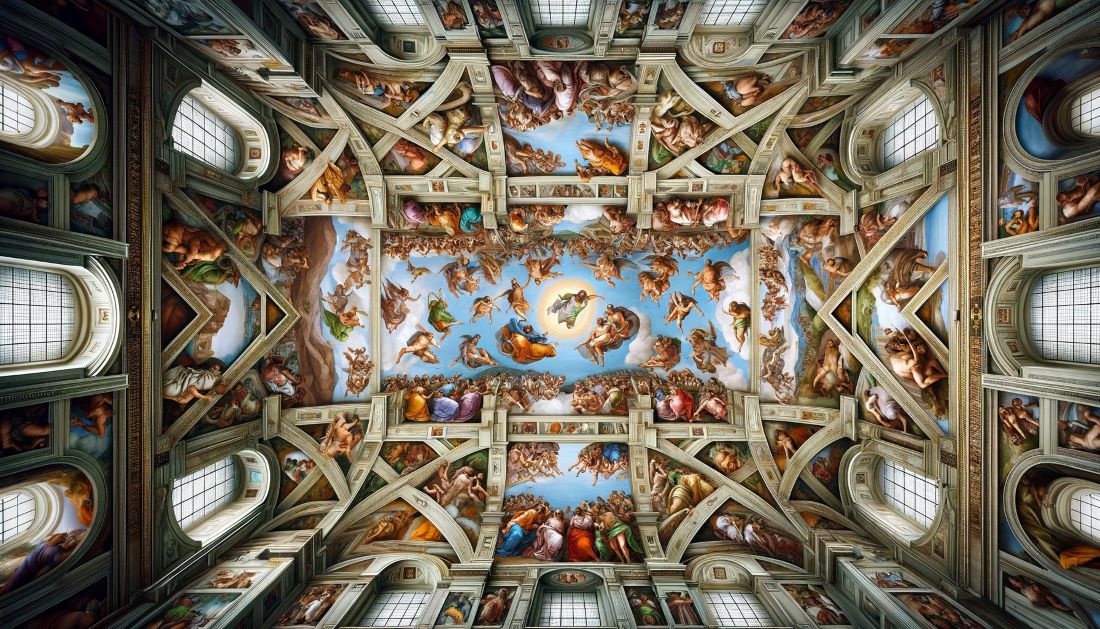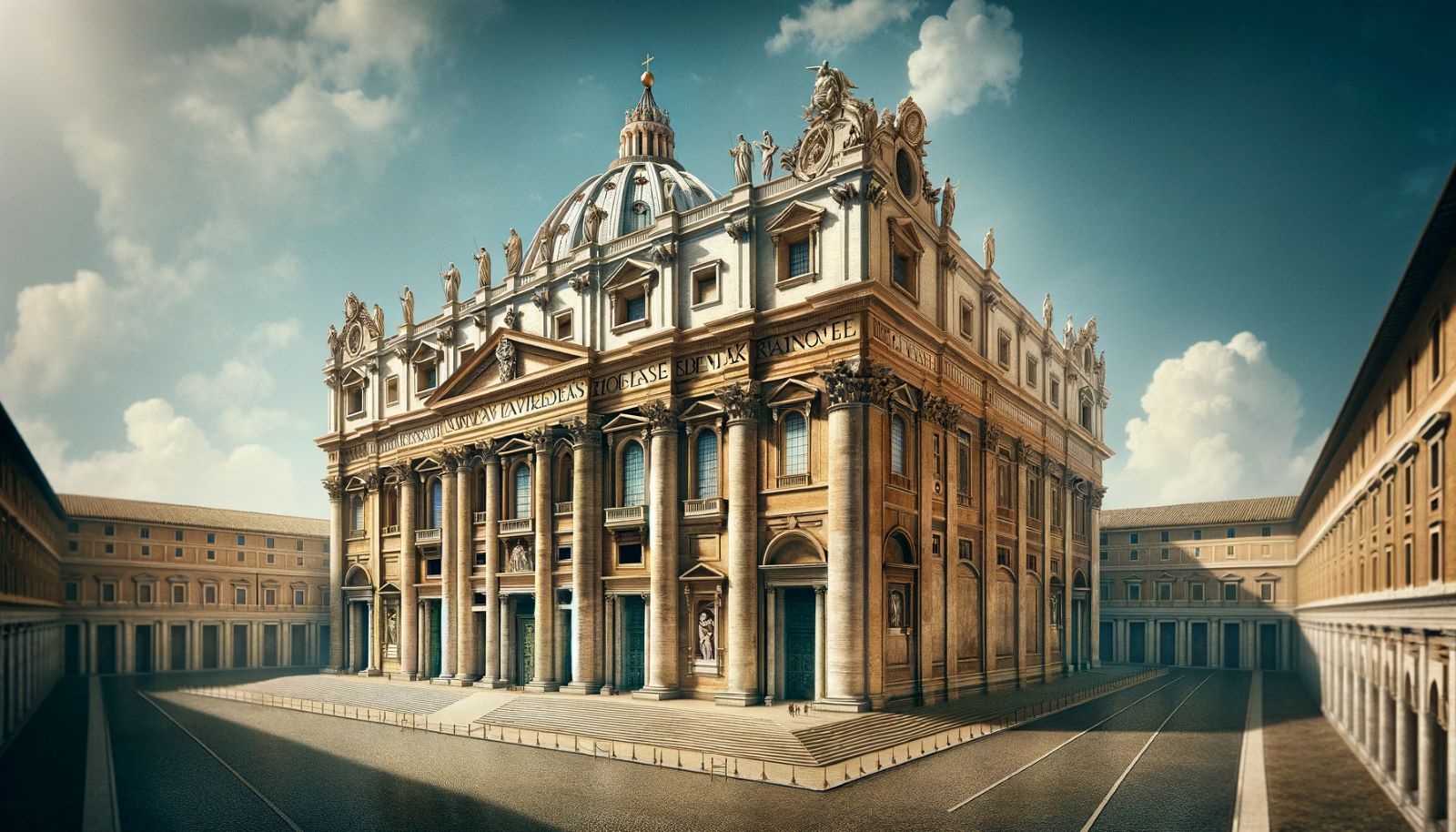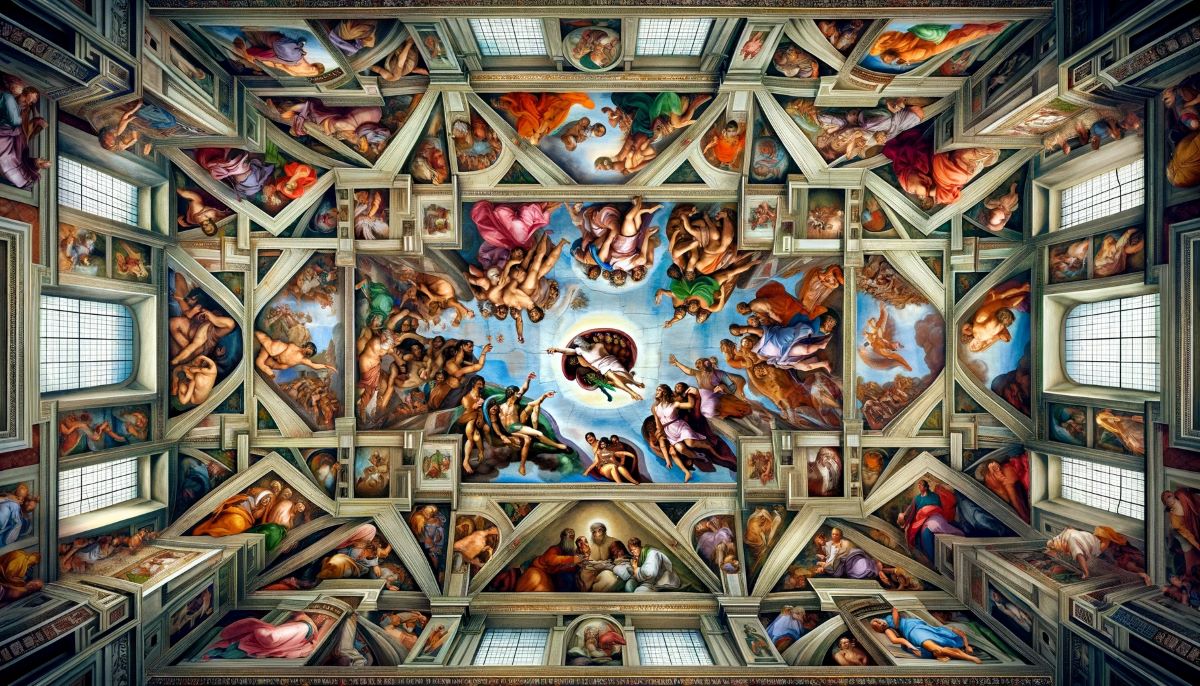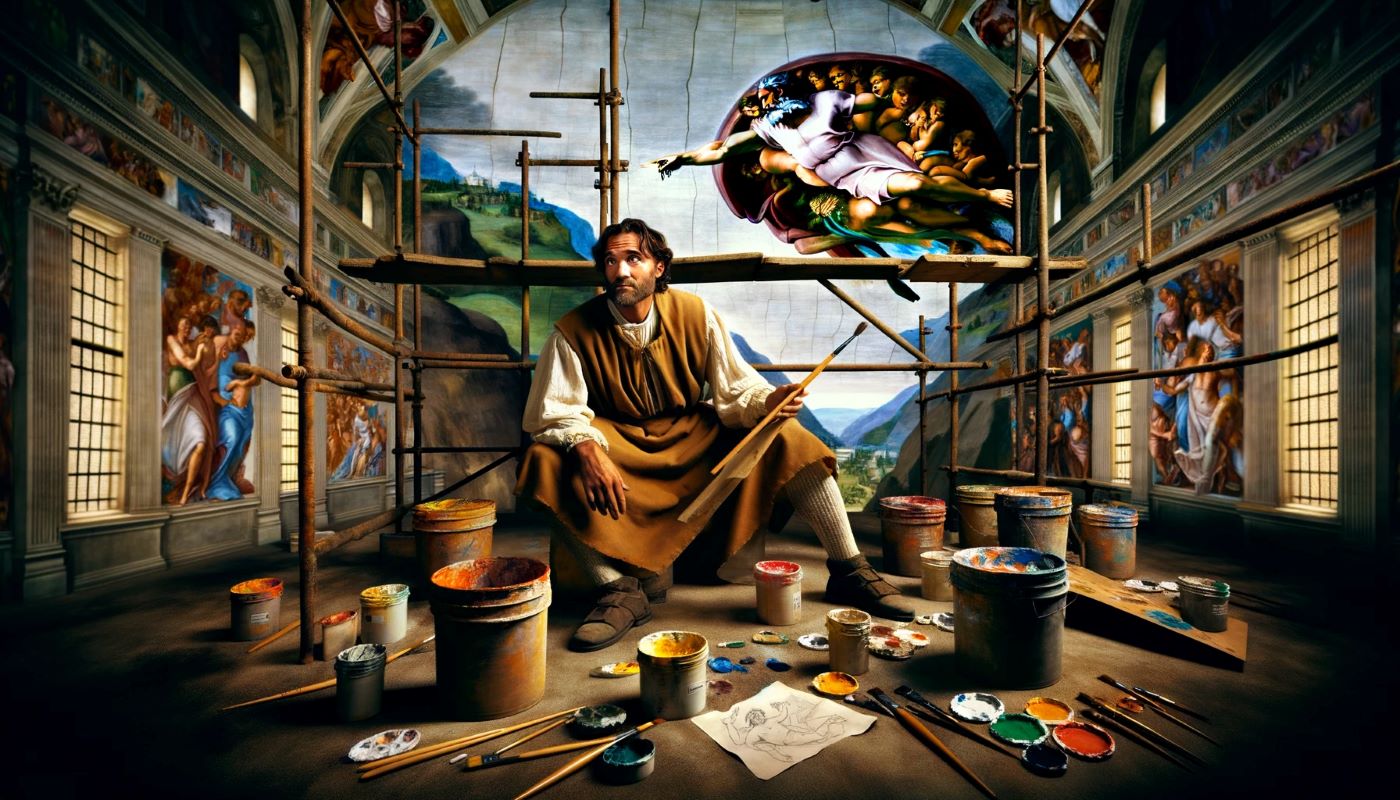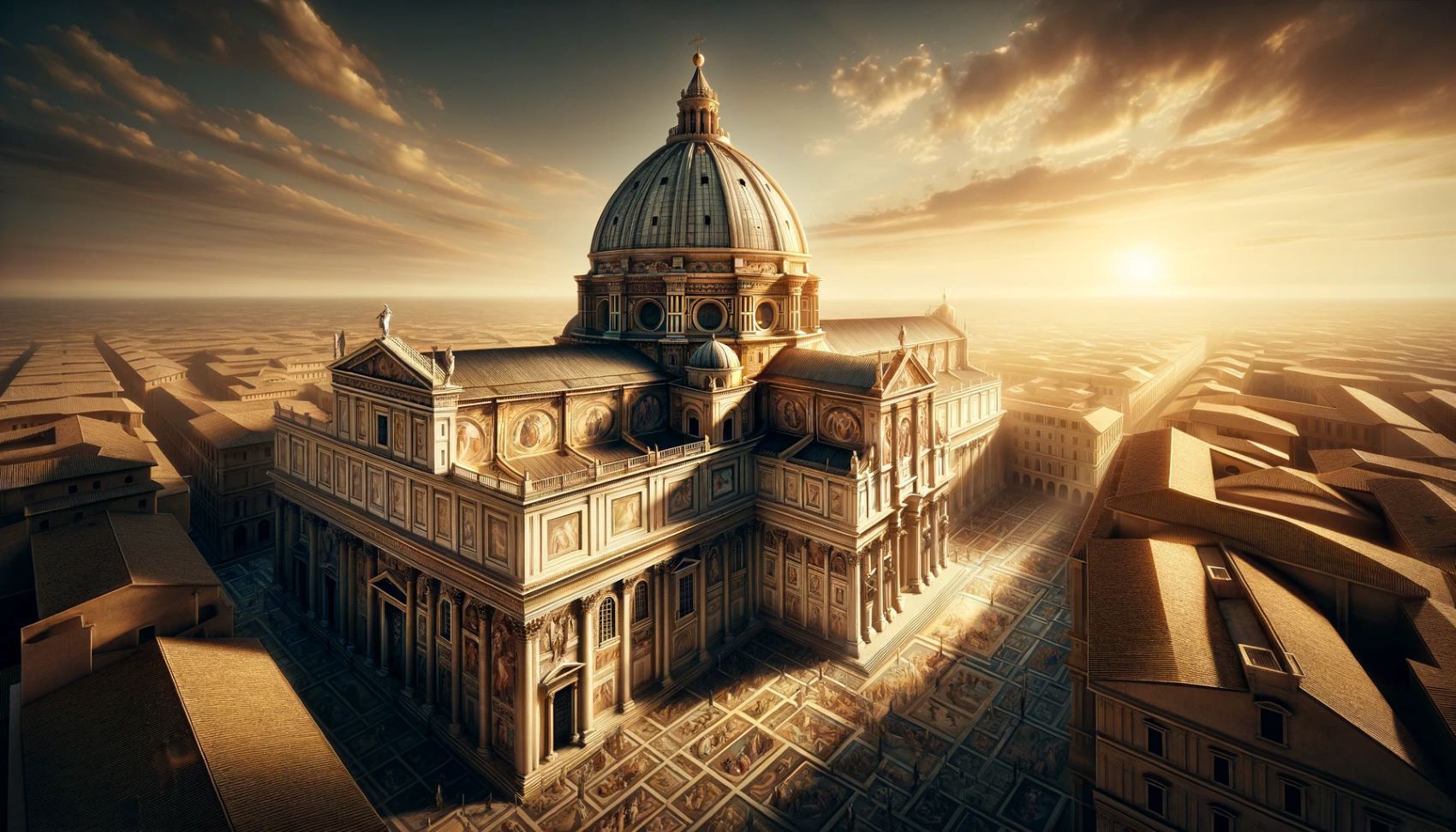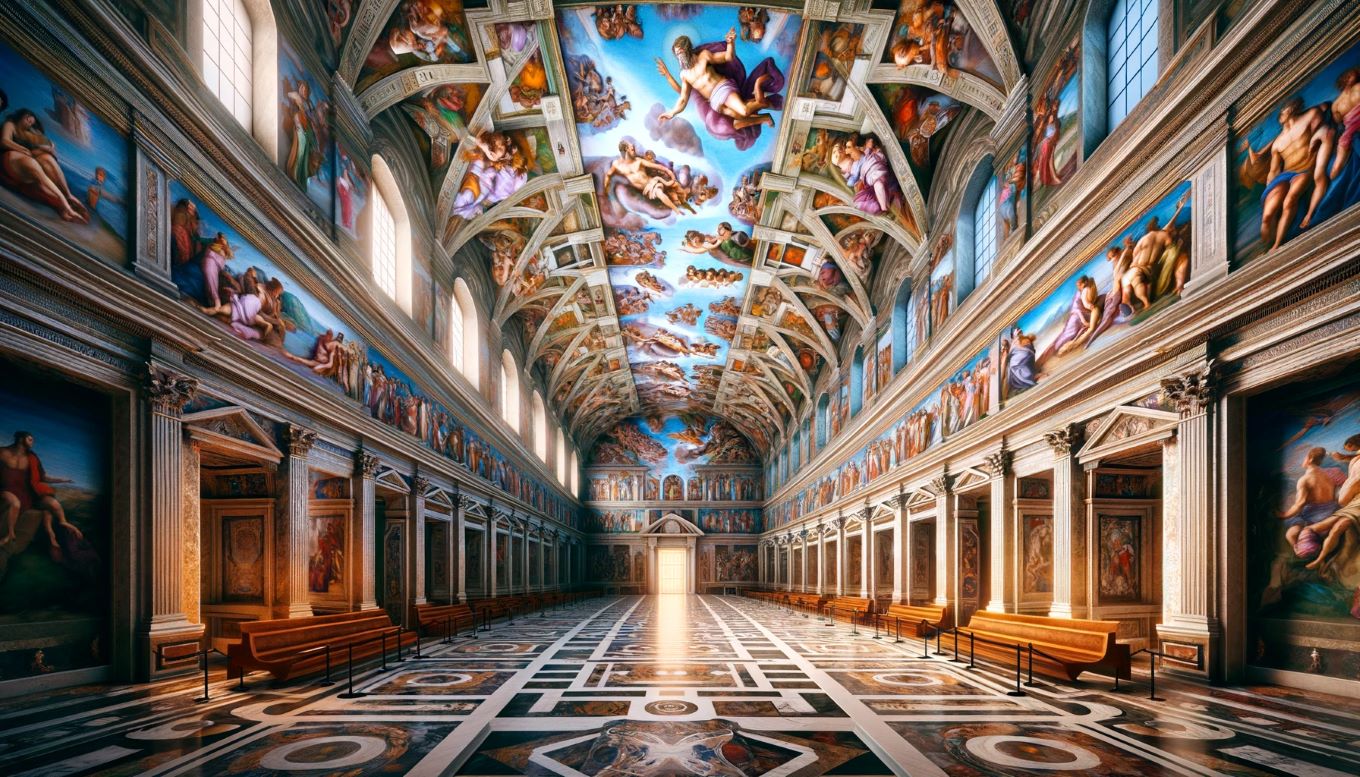Home>Arts and Culture>How Many Different Scenes Are In The Sistine Chapel


Arts and Culture
How Many Different Scenes Are In The Sistine Chapel
Published: March 4, 2024
Peter Smith, Editorial Director at Christian.net, combines deep insights into faith, politics, and culture to lead content creation that resonates widely. Awarded for his contributions to religious discourse, he previously headed a major organization for religious communicators, enhancing dialogue on faith's societal impacts.
Discover the breathtaking beauty of the Sistine Chapel with its diverse array of artistic scenes. Explore the rich history and cultural significance of this iconic masterpiece. Immerse yourself in the world of arts and culture.
(Many of the links in this article redirect to a specific reviewed product. Your purchase of these products through affiliate links helps to generate commission for Christian.net, at no extra cost. Learn more)
Table of Contents
Introduction
The Sistine Chapel is one of the most renowned artistic and religious landmarks in the world. It is a place of great historical and cultural significance, attracting millions of visitors each year. One of the most common questions asked about the Sistine Chapel is, "How many different scenes are in the Sistine Chapel?" In this article, we will explore the various scenes depicted in the Sistine Chapel, from the iconic ceiling frescoes to the stunning altar wall, providing a comprehensive understanding of the artistic and religious significance of this magnificent space. So, let's delve into the rich history and breathtaking artistry of the Sistine Chapel.
Read more: How Was The Sistine Chapel Restored
History of the Sistine Chapel
The Sistine Chapel, located in Vatican City, was built between 1475 and 1483 during the reign of Pope Sixtus IV, for whom it was named. It was designed by a team of renowned architects, including Baccio Pontelli and Giovanni dei Dolci. The chapel was intended as a place for important papal ceremonies and functions, as well as a site for the election of new popes. The construction of the chapel was part of a larger project to restore and enhance the Vatican, reflecting the growing influence and power of the papacy during the Renaissance period. The Sistine Chapel stands as a testament to the artistic and architectural achievements of the time, and its rich history continues to captivate visitors from around the world.
The chapel's history is also intertwined with the artistic legacy of some of the greatest masters of the Italian Renaissance, including Michelangelo, Sandro Botticelli, Pietro Perugino, and Domenico Ghirlandaio. These artists were commissioned to adorn the chapel with magnificent frescoes and paintings, contributing to its status as a masterpiece of Western art. The Sistine Chapel has been the backdrop for numerous significant events in the history of the Catholic Church, and its enduring legacy as a symbol of faith, art, and culture is a testament to its historical importance.
The Sistine Chapel has stood the test of time, surviving periods of political and religious upheaval, and has undergone several restorations to preserve its architectural and artistic treasures. Today, it remains a place of pilgrimage for art enthusiasts, historians, and religious devotees, offering a glimpse into the rich history and cultural heritage of the Vatican and the Catholic Church.
The Ceiling Frescoes
The ceiling of the Sistine Chapel is adorned with some of the most iconic and breathtaking frescoes in the history of art. The masterpiece that adorns the ceiling was created by the legendary Italian artist Michelangelo between 1508 and 1512. The ceiling frescoes consist of nine main panels, each depicting a significant biblical scene, along with numerous smaller decorative elements. The central panels portray the creation of the world, the fall of man, and the story of Noah, while the surrounding areas feature intricate designs and depictions of prophets and sibyls.
The most famous section of the ceiling is the "Creation of Adam," which depicts the iconic moment from the Book of Genesis when God reaches out to touch Adam's hand, imparting the spark of life. This image has become an enduring symbol of human creation and divine inspiration. The ceiling frescoes are a testament to Michelangelo's unparalleled skill as a painter and his ability to capture the grandeur and drama of biblical narratives through his art.
The ceiling frescoes are not only a visual spectacle but also a profound expression of religious devotion and theological significance. They serve as a visual representation of key moments in the Christian faith, inviting viewers to contemplate the divine mysteries and the relationship between humanity and the divine. The intricate details and vibrant colors of the frescoes continue to inspire awe and wonder, drawing visitors into a world of spiritual contemplation and artistic brilliance.
The ceiling frescoes of the Sistine Chapel stand as a testament to the enduring power of art to convey profound spiritual truths and to transcend the boundaries of time and culture. They have left an indelible mark on the history of art and continue to be a source of inspiration and wonder for people from all walks of life. The ceiling frescoes are a timeless masterpiece that embodies the intersection of faith, creativity, and human expression, making the Sistine Chapel a place of pilgrimage for art lovers and spiritual seekers alike.
The Last Judgment
The Last Judgment is a monumental fresco adorning the altar wall of the Sistine Chapel, painted by Michelangelo between 1536 and 1541. This awe-inspiring masterpiece depicts the second coming of Christ and the final judgment of humanity, as described in the Book of Revelation. The central figure of Christ, with outstretched arms, dominates the composition, surrounded by angels, saints, and the souls of the resurrected. The painting is a dramatic portrayal of divine justice, with the righteous ascending to heaven and the damned being cast into the depths of hell. The Last Judgment is a powerful and evocative representation of the Christian belief in the ultimate reckoning and the triumph of good over evil.
The fresco's depiction of the human form, the dynamic composition, and the emotional intensity of the figures have made it one of the most celebrated works of art in history. Michelangelo's masterful use of color, light, and shadow creates a sense of movement and drama, drawing the viewer into the cosmic drama unfolding before their eyes. The Last Judgment is a testament to Michelangelo's unparalleled skill as a painter and his ability to convey profound spiritual themes through his art.
The Last Judgment has sparked intense theological and artistic debates over the centuries, with its bold and unflinching portrayal of the human condition and the divine judgment. The fresco has been both revered and criticized for its raw and unapologetic depiction of the human form and the stark realities of heaven and hell. Regardless of one's interpretation, the Last Judgment remains a powerful and thought-provoking testament to the enduring power of art to grapple with the profound questions of existence and faith.
The Last Judgment continues to captivate and inspire visitors to the Sistine Chapel, inviting them to contemplate the mysteries of life, death, and the afterlife. Its enduring relevance and emotional impact make it a timeless masterpiece that transcends the boundaries of time and culture, inviting viewers to confront the universal themes of redemption, salvation, and divine justice. The Last Judgment stands as a testament to the enduring power of art to convey profound spiritual truths and to provoke contemplation and introspection.
The Side Wall Frescoes
The side walls of the Sistine Chapel are adorned with a series of stunning frescoes that depict significant events and figures from the Bible and Christian tradition. The frescoes on the north and south walls were created by a team of talented artists, including Sandro Botticelli, Pietro Perugino, Domenico Ghirlandaio, and Cosimo Rosselli. These masterpieces contribute to the overall narrative and visual splendor of the chapel, enriching its religious and artistic significance.
The frescoes on the north wall depict scenes from the life of Moses, including the iconic "The Crossing of the Red Sea" and "The Punishment of Korah." These powerful and dynamic compositions capture the dramatic moments of divine intervention and human struggle, inviting viewers to contemplate the themes of faith, liberation, and divine justice. The frescoes on the south wall, known as the "Life of Christ," portray key episodes from the life of Jesus, such as the "Temptation of Christ" and the "Sermon on the Mount." These scenes convey the compassion, wisdom, and spiritual teachings of Christ, offering a visual meditation on the central figure of the Christian faith.
The side wall frescoes serve as a visual counterpart to the ceiling and altar wall masterpieces, enriching the overall narrative of the chapel with their vibrant colors, intricate details, and profound religious symbolism. They provide a rich tapestry of biblical narratives and theological themes, inviting visitors to immerse themselves in the sacred stories and teachings of the Christian tradition. The side wall frescoes are a testament to the collaborative effort of multiple artists and their collective contribution to the artistic legacy of the Sistine Chapel.
The side wall frescoes continue to inspire awe and wonder, drawing visitors into a world of spiritual contemplation and artistic brilliance. Their enduring relevance and emotional impact make them timeless masterpieces that enrich the religious and cultural heritage of the Sistine Chapel, inviting viewers to engage with the profound themes of faith, redemption, and divine grace. The side wall frescoes stand as a testament to the enduring power of art to convey profound spiritual truths and to provoke contemplation and introspection.
Read more: How Big Is The Sistine Chapel Ceiling
The Altar Wall
The altar wall of the Sistine Chapel is adorned with one of the most iconic and monumental frescoes in the history of art – the Last Judgment, painted by Michelangelo between 1536 and 1541. This awe-inspiring masterpiece depicts the second coming of Christ and the final judgment of humanity, as described in the Book of Revelation. The central figure of Christ, with outstretched arms, dominates the composition, surrounded by angels, saints, and the souls of the resurrected. The painting is a dramatic portrayal of divine justice, with the righteous ascending to heaven and the damned being cast into the depths of hell. The Last Judgment is a powerful and evocative representation of the Christian belief in the ultimate reckoning and the triumph of good over evil.
The fresco's depiction of the human form, the dynamic composition, and the emotional intensity of the figures have made it one of the most celebrated works of art in history. Michelangelo's masterful use of color, light, and shadow creates a sense of movement and drama, drawing the viewer into the cosmic drama unfolding before their eyes. The Last Judgment is a testament to Michelangelo's unparalleled skill as a painter and his ability to convey profound spiritual themes through his art.
The Last Judgment has sparked intense theological and artistic debates over the centuries, with its bold and unflinching portrayal of the human condition and the divine judgment. The fresco has been both revered and criticized for its raw and unapologetic depiction of the human form and the stark realities of heaven and hell. Regardless of one's interpretation, the Last Judgment remains a powerful and thought-provoking testament to the enduring power of art to grapple with the profound questions of existence and faith.
The Last Judgment continues to captivate and inspire visitors to the Sistine Chapel, inviting them to contemplate the mysteries of life, death, and the afterlife. Its enduring relevance and emotional impact make it a timeless masterpiece that transcends the boundaries of time and culture, inviting viewers to confront the universal themes of redemption, salvation, and divine justice. The Last Judgment stands as a testament to the enduring power of art to convey profound spiritual truths and to provoke contemplation and introspection.
The Chapel's Architecture
The architecture of the Sistine Chapel is a testament to the grandeur and artistic vision of the Renaissance period. Designed by a team of renowned architects, including Baccio Pontelli and Giovanni dei Dolci, the chapel embodies the harmonious blend of classical and Renaissance architectural elements. The exterior of the chapel features a simple and unassuming facade, reflecting the restrained elegance characteristic of early Renaissance architecture. The use of pilasters, arched windows, and a traditional Latin cross floor plan contributes to the chapel's timeless and dignified appearance.
The interior of the Sistine Chapel is a marvel of architectural ingenuity, with its soaring vaulted ceiling, intricate decorative elements, and carefully designed proportions. The chapel's dimensions and layout were meticulously planned to create an acoustically rich and visually stunning space, ideal for the performance of sacred music and the contemplation of religious art. The architectural details, such as the ornate moldings, pilasters, and coffered ceiling, add to the sense of grandeur and solemnity within the chapel.
The architectural features of the Sistine Chapel serve as a fitting backdrop for the magnificent frescoes and paintings that adorn its walls and ceiling. The carefully calculated use of light, space, and perspective enhances the visual impact of the artistic masterpieces, creating an immersive and awe-inspiring experience for visitors. The architectural design of the chapel reflects the religious and cultural values of the time, emphasizing the importance of divine worship, spiritual contemplation, and the celebration of human creativity.
The Sistine Chapel's architecture continues to inspire admiration and reverence, serving as a testament to the enduring legacy of Renaissance art and architecture. Its harmonious proportions, elegant design, and timeless beauty make it a place of pilgrimage for art enthusiasts, historians, and religious devotees, offering a glimpse into the rich history and cultural heritage of the Vatican and the Catholic Church. The architectural splendor of the Sistine Chapel stands as a testament to the enduring power of human creativity and the pursuit of divine beauty.
The Sistine Chapel Today
The Sistine Chapel stands as a timeless testament to the enduring power of art, faith, and culture. Today, the chapel continues to be a site of great religious and historical significance, attracting millions of visitors from around the world. It serves as a place of worship, hosting important papal ceremonies and gatherings, and remains a symbol of the spiritual and artistic legacy of the Catholic Church.
Visitors to the Sistine Chapel are greeted by the breathtaking beauty of its interior, adorned with the iconic frescoes and paintings that have captivated audiences for centuries. The chapel's carefully preserved architectural details, including its vaulted ceiling, ornate moldings, and majestic altar wall, create a sense of reverence and awe, providing a sacred space for contemplation and spiritual reflection.
The artistic masterpieces within the chapel, including the ceiling frescoes and the Last Judgment, continue to inspire wonder and admiration, inviting visitors to engage with the profound themes of faith, redemption, and divine grace. The vibrant colors, intricate details, and emotional intensity of the paintings convey the timeless truths of the Christian faith, transcending language and cultural barriers to speak to the hearts of all who behold them.
In addition to its religious significance, the Sistine Chapel remains a hub of cultural and artistic heritage, serving as a testament to the enduring legacy of the Italian Renaissance. Its status as a UNESCO World Heritage site underscores its universal value as a treasure of human creativity and expression, attracting scholars, artists, and enthusiasts of all ages to marvel at its splendor.
The Sistine Chapel stands as a living testament to the enduring power of art and faith, inviting visitors to immerse themselves in the rich tapestry of human creativity and spiritual devotion. Its timeless beauty and profound significance continue to resonate with people from all walks of life, making it a place of pilgrimage for those seeking to experience the intersection of art, religion, and history in a single, transcendent space.
Conclusion
The Sistine Chapel stands as a living testament to the enduring power of art and faith, inviting visitors to immerse themselves in the rich tapestry of human creativity and spiritual devotion. Its timeless beauty and profound significance continue to resonate with people from all walks of life, making it a place of pilgrimage for those seeking to experience the intersection of art, religion, and history in a single, transcendent space. The chapel's history, architecture, and awe-inspiring frescoes, including the iconic ceiling and the monumental Last Judgment, collectively contribute to its status as a cultural and religious treasure of unparalleled significance. As the Sistine Chapel continues to inspire wonder and admiration, it serves as a reminder of the enduring legacy of the Italian Renaissance and the universal truths that transcend time and space. Whether as a site of religious worship, a hub of artistic heritage, or a symbol of human creativity, the Sistine Chapel remains a beacon of beauty and spirituality, inviting all who enter to behold the divine and the human in harmonious union.

